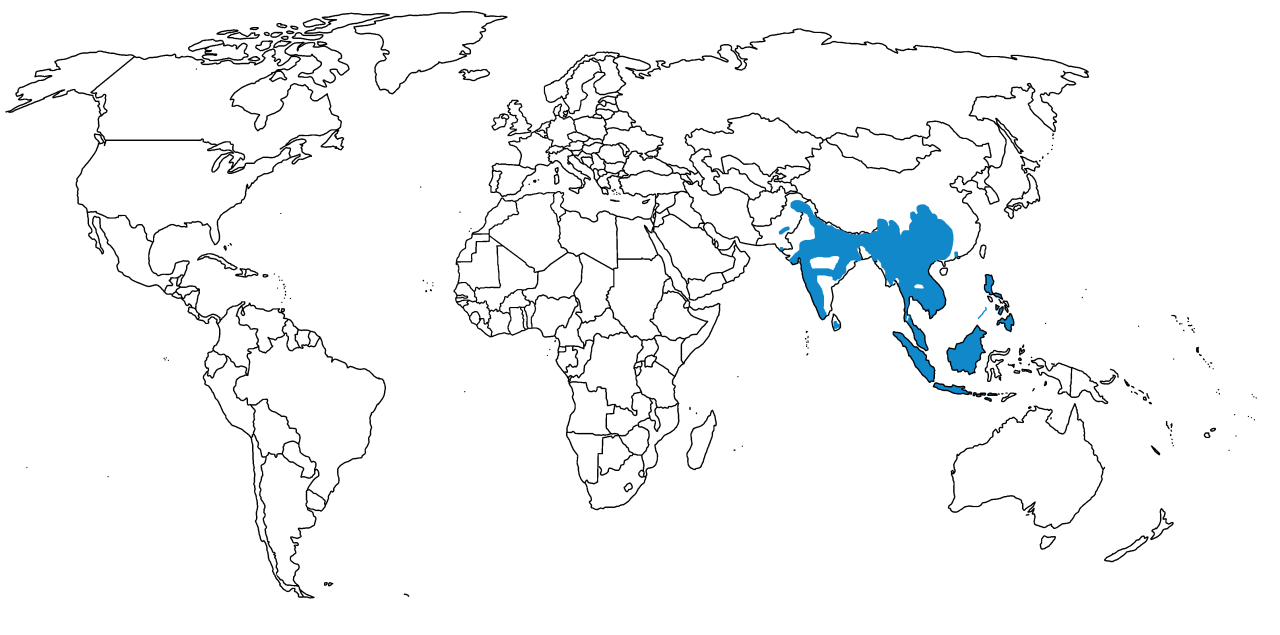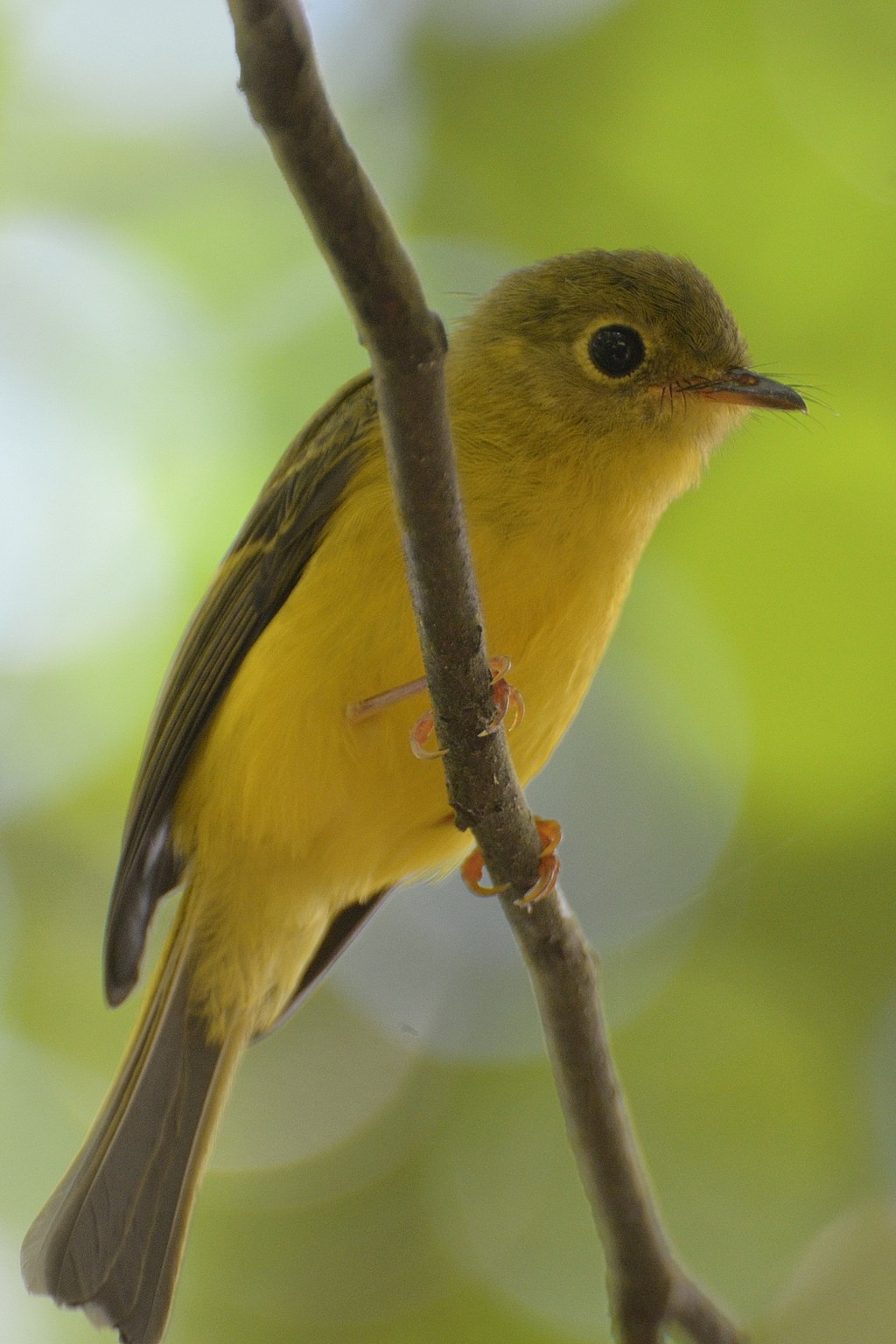
Grey-Headed Canary-Flycatcher by J. J. Harrison, CC BY 3.0
Etymology: Midge Seizer
First Described By: Swinhoe, 1871
Classification: Dinosauromorpha, Dinosauriformes, Dracohors, Dinosauria, Saurischia, Eusaurischia, Theropoda, Neotheropoda, Averostra, Tetanurae, Orionides, Avetheropoda, Coelurosauria, Tyrannoraptora, Maniraptoromorpha, Maniraptoriformes, Maniraptora, Pennaraptora, Paraves, Eumaniraptora, Averaptora, Avialae, Euavialae, Avebrevicauda, Pygostaylia, Ornithothoraces, Euornithes, Ornithuromorpha, Ornithurae, Neornithes, Neognathae, Neoaves, Inopinaves, Telluraves, Australaves, Eufalconimorphae, Psittacopasserae, Passeriformes, Eupasseres, Passeri, Passerida, Paroidea, Stenostiridae
Referred Species: C. ceylonensis (Grey-Headed Canary-Flycatcher), C. helianthea (Citrine Canary-Flycatcher)
Status: Extant, Least Concern
Time and Place: Within the last 10,000 years; in the Holocene epoch of the Quaternary period


Culicicapa is known from the Indian subcontinent, Southeast Asia, Indonesia, and the Philippines; it is also known from southwestern portions of China

Physical Description: Culicicapa, or the Canary-Flycatchers, is a genus of two types of small, yellow songbirds. These are round birds, with short tails and bright coloration. Ranging between 11 and 13 centimeters in length, they are about the length of a common cell phone, though being birds they are significantly lighter in weight. The birds have small, round heads and short, narrow beaks with fine tips. Both species feature yellow chest and belly feathers, green back feathers, and a mixture of black, green, and yellow feathers on the wings and tail. All sexes are alike in appearance in both species.
Diet: The Canary-Flycatchers primarily eat – you guessed it – flies, and additionally gnats, mosquitos, beetles, wasps, moths, and other small invertebrates. They will use their small beaks to catch insects on the wing. They also will dig in plant material for insects there.
Behavior: These birds are very noisy, making loud, squeaky, and varying calls – these calls can sound like a variety of syllables including tsu-si-tchu-si-si, sweet su sweet, tus-tsu-tswee, pit pit pit, chit-tit-tit-tit-tirr, tit-titu-wheee, and trills. These birds vary by species in terms of group living, as well; the differences between the species are listed below. They breed anytime between March and July; the Grey-Headed Canary-Flycatcher pairs for life, and showcase elaborate courtship rituals. The male will perform short circles of flight in front of the perched female and then will perch next to her, before flying again; he then hovers and displays his butt while the two call to each other. The male then courtship feeds his mate, and after they do the do, the male will build a nest out of moss, lichens, and leaves high up in a tree. They’ll brood in the same nest. The clutches are made of 3 to 4 eggs, and both parents aid in feeding the nestlings. Both species are mainly residential; the Grey-Headed Canary-Flycatcher does show some migration from the HImalayas to the plains of India if a resident of that region; and Chinese populations of the species do migrate back and forth from central to southern China during the year.
Citrine Canary-Flycatcher by Afriefrahman, CC BY-SA 4.0
Ecosystem: These birds live in lowland and mountain forests, mainly in secondary growth and along forest edges; they are mainly found in broadleaf, dry forests and along ravines and gorges as well as along forest edges. The elevation in question that they live in depends mainly on the habitat they’re found in – for example, they tend to be found at higher elevations in locations with higher elevations, etc.
Other: There are some conflicting sources on the behavior of the Grey-Headed Canary-Flycatcher; I have gone here with the most recent source I could find.
Species Differences:
The two species mainly differ on the appearance of the head, as well as their natural ranges. The Grey-Headed Canary-Flycatcher has a grey head (as the name would suggest), including a grey crest of feathers on the top, and lives mainly on the Asian mainland and in Indonesia; the Citrine Canary-Flycatcher lives in the Philippines and has a yellow-green head, with no crest.
They also show extensively different behavior – the Grey-Headed Canary-Flycatchers is more more social, feeding in pairs, groups, and mixed-species foraging flocks. They are also tamer and much more likely to approach people; while the Citrine Canary-Flycatcher is more shy and solitary, though they do form pairs to feed in the breeding season and can join mixed-species foraging flocks.
~ By Meig Dickson
Sources
Clement, P. 2018. Citrine Canary-flycatcher (Culicicapa helianthea). In: del Hoyo, J., Elliott, A., Sargatal, J., Christie, D.A. & de Juana, E. (eds.). Handbook of the Birds of the World Alive. Lynx Edicions, Barcelona.
Clement, P. 2018. Grey-headed Canary-flycatcher (Culicicapa ceylonensis). In: del Hoyo, J., Elliott, A., Sargatal, J., Christie, D.A. & de Juana, E. (eds.). Handbook of the Birds of the World Alive. Lynx Edicions, Barcelona.
Jobling, J. A. 2010. The Helm Dictionary of Scientific Bird Names. Christopher Helm Publishing, A&C Black Publishers Ltd, London.
Johansson, U. S., J. Fjeldsa, R. C. K. Bowie. 2008. Phylogenetic relationships within Passerida (Aves: Passeriformes): A review and a new molecular phylogeny based on three nuclear intron markers. Molecular Phylogenetics and Evolution 48: 858 – 876.
Vaurie, C. 1953. A generic revision of flycatchers of the tribe Muscicapini. Bulletin of the AMNH 100: 531.

